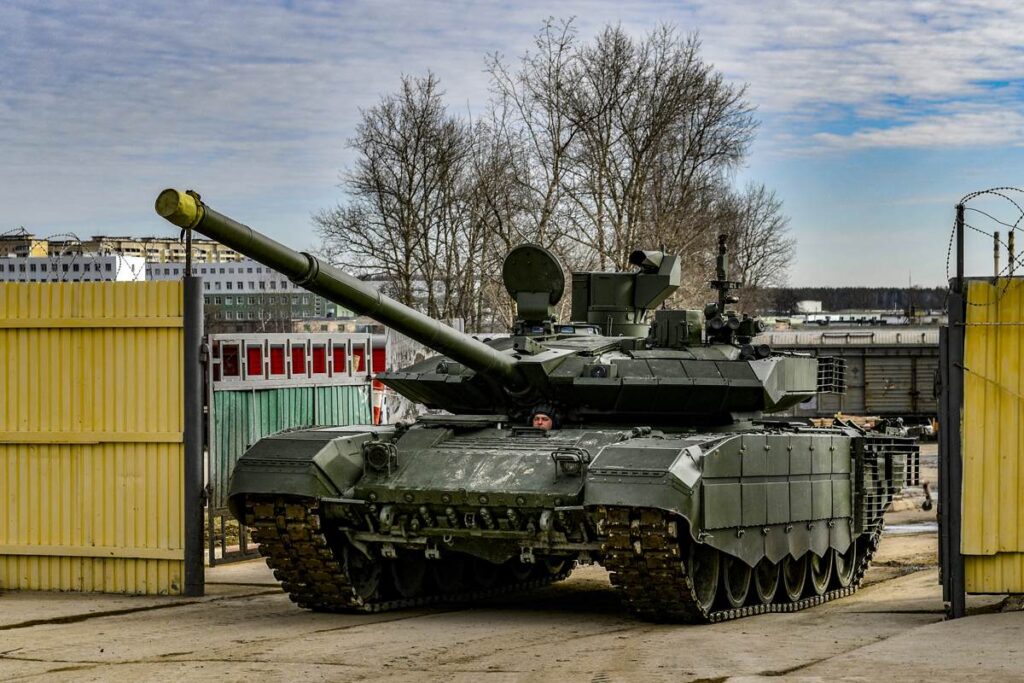Can anybody tell how many new T-90M tanks Russia is building—300 a year or just 10? NATO’s asking for a friend

Russia is building hundreds of new T-90M tanks a year—enough to rebuild some of its battered tank regiments and establish an armored reserve for Russia’s wider war on Ukraine … or for some future war against NATO.
That’s the conclusion of a recent study by the pro-Ukraine Conflict Intelligence Team. But there’s a problem. According to one expert, CIT is wrong. Sergio Miller, an analyst and former British Army intelligence officer, believes Russia is struggling to complete even 100 T-90Ms a year—and most of those it does complete are revamped T-90As rather than all-new vehicles.
Journalist David Hambling was the first to report on Miller’s claim.
It’s unclear, based on the available public evidence, who is right: CIT’s experts or Miller. But it matters. The scores of tanks CIT believes Russia is producing that Miller thinks are vaporware are enough to equip at least one armored regiment every year.
The 51-ton, three-person T-90M is heavily armored and boasts modern optics and a powerful 125-millimeter main gun. It’s one of the best tanks in the world.
Has there been a “dramatic fall-off” in tank production at Russia’s Uralvagonzavod tank factory, in Sverdlovsk Oblast 1,600 km from Ukraine, to borrow Hambling’s phrasing? Or is Uralvagonzavod churning out fresh tanks at a rate faster than any tank factory in a Western country?
“According to our estimates, Uralvagonzavod produced 60 to 70 T-90M tanks in 2022,” CIT reported. “In 2023, amid efforts to mobilize the defense industry, output may have increased to 140 to 180 tanks, and by 2024, it may have surpassed 200 units annually, possibly approaching a production rate of 250 to 300 tanks per year.”
The word “may” is doing a lot of work here, but it’s worth noting that CIT isn’t alone in perceiving an increasing rate of tank production. A few months ago, Czech analyst Jakub Janovksy concluded Uralvagonzavod has been building between 150 and 200 T-90Ms annually.
For comparison, the US Army’s own tank plant in Ohio, operated by General Dynamics Land Systems, has been producing just a few dozen M-1 Abrams tanks annually—down from 90 a year in the early 2020s.
To be fair to the Americans, they’re not mired in a costly war, and they plan to boost Abrams production with the introduction of a new variant in the coming years. At the same time, the Russian military has shifted to infantry-led assaults in Ukraine, and now deploys—and loses—just a few tanks every month.
That shift means any fresh tanks Russia produces—through new production or by fetching old Cold War tanks from long-term storage and upgrading them—can go toward replacing the roughly 4,000 tanks the Russians have lost in Ukraine. Unless the fighting in Ukraine shifts back to mechanized operations, this restored tank corps can be held in reserve for future conflicts.

Production freefall?
But that’s a moot point if Miller is right and Uralvagonzavod, or UVZ, isn’t building very many T-90Ms. “In total, UVZ only claimed to deliver 100 tanks in 2024,” Miller told Hambling. “I have no idea where the high figures quoted by some Western reporting come from. There is no evidence this is the case.”
In addition to taking Uralvagonzavod’s delivery announcements at face value, Miller scrutinized images of tank shipments in Russia to arrive at his lower production figure. So far this year, he concluded, Russia has completed 10 or fewer T-90Ms.
If Miller is right, Uralvagonzavod could be on track to deliver a fraction of the T-90Ms that Janovsky and CIT anticipate. With so few new tanks, the Kremlin would struggle to restore its depleted armored regiments.
Why T-90M production may be freefalling—if indeed it is—isn’t hard to guess. “Rather than being new builds, the ‘new’ T-90Ms seen in 2024 were in fact upgraded T-90As,” Hambling wrote. “Approximately 300 of the earlier version tanks were produced.”
“It is likely that all available T-90As were withdrawn and upgraded to the T-90M standard,” Hambling added. “In theory, UVZ is capable of producing new T-90Ms from scratch,” he added. But manufacturing a T-90M from the tracks up requires precise welding, which in turn requires a skilled workforce and attentive quality control.
Squeezed by sanctions and competing with the war in Ukraine for men, Uralvagonzavod may have labor and supply problems. “The dramatic fall-off suggests that after they ran out of T-90As to upgrade, UVZ has struggled to make new T-90Ms,” Hambling wrote.
We may not know who’s right about T-90M production unless and until Russia either re-deploys tanks to Ukraine in large numbers—or launches an armored assault on NATO’s eastern flank. Maybe it’s best not to know for now.
